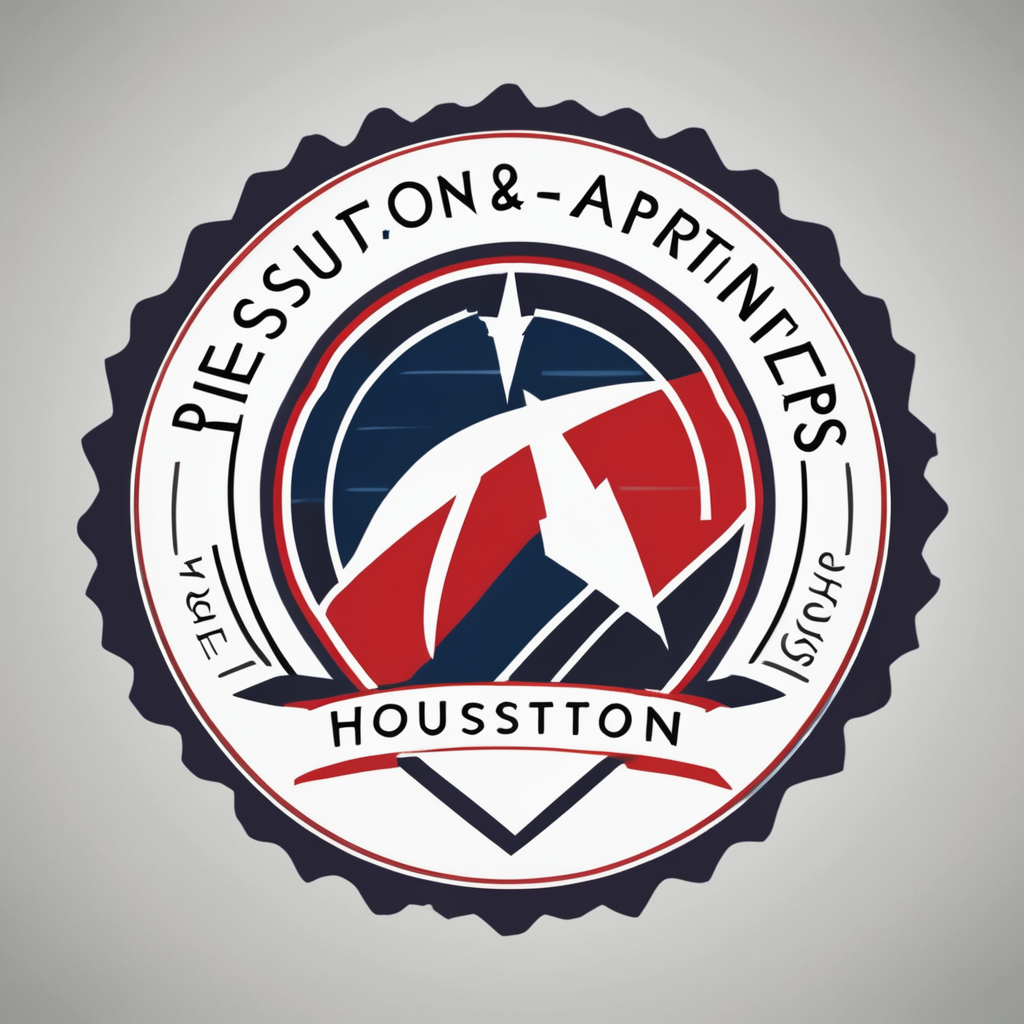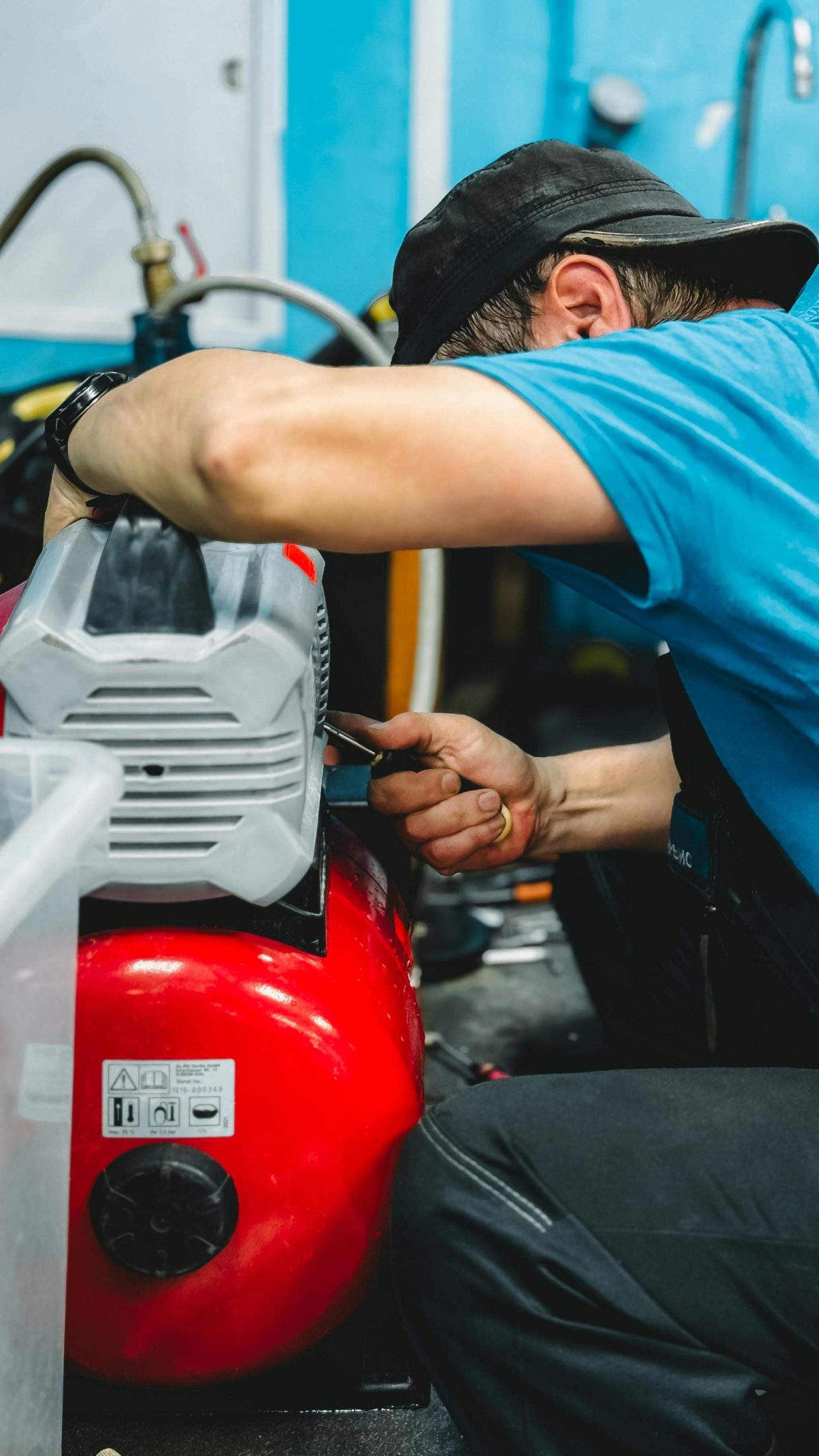Installing an industrial air compressor demands careful planning and precise execution to ensure energy efficiency and operational reliability. Understanding site-specific air requirements, selecting the right equipment, and incorporating maintenance-friendly features are key to reducing long-term costs. This approach not only optimizes performance but also supports sustainable, cost-effective industrial operations.
Essential Steps for Effective Industrial Air Compressor Installation
The industrial air compressor installation starts with recognizing its significance in ensuring operational efficiency and safety. Proper installation directly impacts energy consumption, equipment longevity, and workforce safety. An improperly installed compressor can lead to increased vibrations, noise pollution, and even safety hazards, emphasizing the need for careful planning and execution.
This might interest you : What Opportunities Exist for UK Businesses in a Post-Brexit Economy?
The main benefits of an effective installation include reduced energy costs, improved system reliability, and full compliance with industry safety standards. Precise placement, correct connections, and thorough testing ensure that the compressor functions optimally and minimizes downtime. Adopting these practices is key to maintaining a dependable compressed air supply, which is vital for many industrial processes.
The typical process of installation involves several key steps:
This might interest you : What Are the Latest Trends Influencing UK Business Growth?
- Site assessment and preparation: Ensuring a stable, vibration-free foundation and adequate ventilation.
- Positioning: Placing the compressor on a flat, level surface with appropriate clearance for access and maintenance.
- Electrical setup: Connecting the compressor to a dedicated electrical circuit, with proper grounding and safety devices.
- Piping and connections: Installing high-quality hoses and pipes with tight fittings to prevent leaks, which can cause efficiency losses.
- Ancillary equipment: Integrating filters, dryers, and pressure regulation components appropriately.
- Testing and startup: Conducting leak tests, system checks, and initial operation trials, including boilerplate commissioning procedures.
It’s essential to follow precise installation guidelines to avoid common pitfalls. For example, correct compressor alignment and vibration reduction techniques such as using vibration pads can significantly extend equipment life. Ensuring proper ventilation is not just about comfort; it prevents overheating of critical components. Adequate safety measures, including pressure relief valves and emergency shutdown mechanisms, must be in place from the outset.
Incorporating professional assistance, especially from companies experienced in industrial air compressor installation, ensures adherence to industry standards and best practices. Their expertise minimizes operational disruptions during setup and guarantees a safe environment. For those seeking detailed guidance, the GTEC Group provides comprehensive resources and can be consulted via their dedicated page for more insights. mastery of these steps fosters energy savings, optimizes system reliability, and aligns with environmental regulations integral aspects of modern industrial operations.
Site Preparation and Compressor Location Planning
Site Assessment and Design Considerations
Thorough site preparation for compressors forms the backbone of an efficient industrial air compressor setup. Begin by evaluating spatial limitations, environmental conditions, and required airflow capacity planning as part of your pre-installation checklist. The installation process steps often start with confirming the adequacy of site ventilation and environmental controls. Proper ventilation needs are paramount to prevent overheating and to optimize compressor efficiency metrics, ensuring heat is efficiently removed from the installation zone.
Integral to the planning is a careful assessment of pressure system requirements, which should align with regulatory environmental regulations and the chosen industrial compressor types overview. This process takes into account compressed air quality standards, anticipating not only current needs but also potential system expansions.
Location Selection and Space Planning
Choosing compressor location is a balancing act between operational accessibility, maintenance planning after installation, and reducing operational downtime. Position units in an area with enough clearance to allow mounting and securing compressors while maintaining compliance with safety protocols during installation. Noise control considerations influence location—placing compressors away from sensitive work areas supports both occupational comfort and compliance with compressor noise abatement standards.
In line with best installation process steps, ensure the area meets requirements for both electrical connection for compressors and efficient piping and tubing installation. It’s necessary to avoid voltage drops by proximity to appropriate outlets—an essential installation best practice for larger compressors and when following compressor sizing guidelines.
Foundation and Vibration Control Measures
Compressor foundation requirements dictate a flat, stable, and robust surface with enough load capacity for the selected compressor type. Integrating vibration reduction methods such as installing vibration monitoring tools, damping mats, or spring isolators enhances both operational safety training and compliance with industry standards. Proper compressor alignment techniques on the foundation reduce undue stress on housings and piping, directly impacting compressor downtime causes and maintenance planning after installation.
Effective mounting and securing compressors with the right anchoring systems is crucial for long-term durability. Vibration reduction also assists with troubleshooting noise issues and enhances energy efficiency optimization. Remember to factor in noise control considerations and plan foundation installation with room for future compressed air system upgrades or retrofitting existing systems, which reinforces overall reliability and simplifies future compressor replacement planning.
Throughout the setup, refer to a detailed pre-installation checklist and ensure each step supports continuous monitoring solutions and risk assessment procedures in your industrial air compressor setup, promoting long-term system health and adherence to installation best practices.
Installation Procedures and Safety Protocols
Professional industrial air compressor setup involves a detailed sequence of installation process steps that safeguard equipment longevity and operational safety. It starts with comprehensive site preparation for compressors, ensuring the compressor foundation requirements are not just met but exceeded. This means verifying that the designated area is flat, solid, and leveled, with enough load-bearing capacity to support the unit’s weight, which is highlighted in every proper pre-installation checklist.
Transport and Mounting
The process begins with transporting and positioning the compressor on the prepared base. Using essential installation tools such as lifting slings or forklifts ensures controlled placement. Proper mounting and securing compressors employ vibration reduction methods such as robust pads or adjustable mounts. These not only support compressor alignment techniques but also act as a first barrier against both noise and excessive vibration.
Electrical Wiring and Power Connection Best Practices
Once physically secured, the compressor’s electrical connection for compressors becomes paramount. Installation best practices dictate that all electrical work complies with safety standards—using proper grounding, overload protection devices, and dedicated circuits that match air compressor power requirements. Verification of wiring integrity, through electrical safety checks and control panel configuration, prevents startup issues and aligns with compliance with industry standards.
Piping and Tubing Installation, Leak Testing
Connecting piping and tubing installation happens next, with careful routing to optimize airflow capacity planning and reduce future compressor downtime causes. Leak testing procedures are a mandatory part of the installation process steps, typically using soapy water or dedicated leak detection tools. Properly sealed joints prevent losses and optimize compressor output, while installing filters and dryers at this stage helps maintain high air quality control and minimizes water, oil, and particulate contamination.
Safety Measures During Installation and Startup
Safety protocols during installation must remain front and center. Every installer is responsible for wearing PPE and performing risk assessment procedures specific to compressed air system hazards, such as unexpected releases or electrical faults. Operator safety compliance involves clear safety signage and labeling, routine quality assurance checks, and documented emergency shutdown procedures. Adherence to regulatory standards—like pressure relief valve installation and airflow monitoring—is part of every robust air compressor project management protocol.
With each of these installation process steps rigorously applied, the resulting industrial air compressor setup delivers both reliability and efficiency, fulfilling energy efficiency optimization and maintenance planning after installation. This structured approach directly addresses typical startup issues and lays a foundation for preventive maintenance schedules, significantly extending system lifespan and safeguarding operational safety.
Auxiliary Equipment and System Integration
Air Treatment System Setup and Calibration
Precise installation of air treatment components is pivotal in an industrial air compressor setup. Begin by fitting filters, dryers, and moisture separators directly after the compressor output, adhering to the predefined installation process steps. Position these devices in accessible locations as specified in the pre-installation checklist, ensuring that routine maintenance—such as filter changes and desiccant replacement—remains straightforward.
Carefully select and install dryers based on flow rate and dew point requirements to meet compressed air quality standards. Calibrate pressure regulators and gauges—following compressor sizing guidelines—to maintain consistent pressure levels and prevent operational issues. Regular testing, as part of the startup testing checklist, validates system performance and confirms component integrity.
Piping System Design for Efficiency and Redundancy
During the installation process steps, design the piping layout to promote efficiency, minimize pressure drops, and provide system redundancy. Use high-quality piping and tubing installation practices: all joints must be properly sealed, and pipe supports should reduce vibration and allow easy inspection.
When integrating new piping into existing systems or for retrofitting existing systems, ensure correct airflow and pressure balancing. Airflow capacity planning is essential and should match the compressor output to avoid energy losses, considering all possible pneumatic tools and expansion. Dedicated air receivers must be sized and carefully sited according to air receiver sizing standards, both to buffer demand surges and to optimize system responsiveness.
Control Panel and Safety Valve Configuration
Integrating the control panel and ensuring safety begins with mounting and securing compressors and auxiliary panels onto the correct foundation, factoring in compressor foundation requirements. Install sensors, pressure switches, and safety valves in alignment with the recommended installation tools and methods. Proper electrical connection for compressors and safety controls remains a top priority for operator safety compliance.
During commissioning and startup procedures, calibrate the control systems—verifying signal accuracy, real-time data reporting, and the integrity of emergency shutdown procedures. Set up safety protocols during installation, such as pressure relief valve installation and control panel configuration, referencing manufacturer documentation for compatibility and optimal function.
Routine quality assurance checks—including leakage testing procedures and pressure gauge calibration—help detect potential faults early. Integrate continuous monitoring solutions where possible to support preventive maintenance schedules, swiftly identifying areas prone to inefficiency or compressor downtime causes.
System Integration with Existing Equipment
Seamless integration with existing systems or pneumatic tools requires a thorough examination of current site preparation for compressors. Carefully synchronize new compressor control systems with any installed SCADA or HVAC integration for compressors, ensuring data cohesion and operational safety training for all personnel.
Verify correct alignment and vibration reduction methods using dedicated vibration monitoring tools. Confirm noise control considerations, such as installing silencers and mufflers, to support workplace comfort and regulatory compliance. Ensure all operational safety training and risk assessment procedures are fully documented according to the compressor system documentation practices.
By addressing each stage—from component installation through to calibration and system checks—with attention to the outlined installation process steps, industrial air compressor setup can achieve reliability, efficiency, and long-term energy savings for any application.
Post-Installation Checks and Maintenance Planning
Initial Testing and Calibration Procedures
After completing all installation process steps for an industrial air compressor setup, immediate checks are vital to achieve peak performance and establish safety. Begin by conducting pressure output testing using calibrated gauges to ensure the system delivers the required air pressure. Carefully apply leakage testing procedures: pressurize the lines, shut off valves, and inspect joints for hissing or pressure drops, confirming system integrity. Adjust controls, pressure relief valves, and compressor alignment techniques for precise configuration. Document all findings and system settings as part of the post-installation process—this facilitates both future troubleshooting and regulatory compliance.
Maintenance Scheduling and Operator Training
Preventive maintenance schedules must be implemented following the installation process steps. This involves setting regular intervals for filter replacements, lubrication, and inspecting all hoses—critical for air quality control and reducing compressor downtime causes. Schedule ongoing vibration reduction methods, using vibration monitoring tools or software to detect mechanical issues early. Operator training is a non-negotiable requirement. Safe operation and energy efficiency optimization depend on thorough instruction in operational safety training, emergency shutdown procedures, proper compressor lubrication setup, and compliance with industry standards.
Provide detailed manuals and hands-on walkthroughs covering startup testing checklists, response to alarm indicators, and maintenance planning after installation. Integrating clear documentation and record keeping ensures every operator can consult historical data, supporting safer decisions and reduced operational downtime.
Troubleshooting Common Post-Installation Issues
Rapid troubleshooting during initial commissioning and beyond reduces losses. Frequent issues such as unforeseen leaks, pressure drops, or abnormal noise after an installation process step often stem from improper mounting and securing compressors, missed steps in the pre-installation checklist, or suboptimal compressor foundation requirements. Use a comprehensive installation troubleshooting guide to rule out electrical connection for compressors, airflow limitations from poor ventilation needs, or incorrectly sized pipes and tubing.
Instruct operators to monitor compressor efficiency metrics and energy consumption. Active energy consumption monitoring and regular air system leak detection help address airflow anomalies before they escalate. When repeated failures occur, revisit the installation process steps and review compressor sizing guidelines, as mismatches in design or foundation can cause recurrent trouble. Strengthen site preparation for compressors prior to future upgrades, ensure full documentation, and refresh operator training essentials to maintain long-term reliability and safety.
Professional Installation and Supporting Services for Industrial Compressors
Selecting qualified experts for an industrial air compressor setup is a decisive factor influencing system performance, operational safety, and long-term costs. Certified professionals not only execute installation process steps with precision, but also integrate best practices for compressor alignment techniques, mounting and securing compressors, and compressor foundation requirements. Employing specialists who understand both site preparation for compressors and environmental regulations helps guarantee that your system complies with rigorous industry standards and supports efficient, trouble-free operation.
A comprehensive support package should begin with a detailed pre-installation checklist. This includes compressor sizing guidelines, an evaluation of airflow capacity planning, choosing compressor location for minimal noise and maximum accessibility, and confirming compressor power requirements. Site surveys assess both immediate and future needs, enabling proper compressor type selection and anticipating potential requirements for compressor replacement planning or system expansion.
During the on-site phase, installers oversee the complete process: from foundation preparation using vibration reduction methods, through precise electrical connection for compressors, to proper ventilation needs and air quality control. Pipework and tubing installation use durable, leak-proof materials, with all connections undergoing rigorous leakage testing procedures and pressure gauge calibration. Attention to safety protocols during installation—including electrical safety checks, safety signage and labeling, and emergency shutdown procedures—ensures compliance and mitigates risk from handling compressed air hazards.
Professional installers manage the critical commissioning and startup procedures. This covers compressor system commissioning, a structured startup testing checklist, and comprehensive quality assurance checks. The process involves control panel configuration, setting pressure relief valves, tuning compressor cooling system setup, and installing filters and dryers. Once operational, maintenance planning after installation becomes central. Service providers supply ongoing support with operator training essentials, preventive maintenance schedules, and clear system documentation and record keeping for accountability.
Additionally, experienced teams reduce operational downtime by managing complex projects—such as retrofitting existing systems, integrating with pneumatic tools, and upgrading compressor control systems—without interrupting production. Access to a robust stock of high-quality parts enables quick replacement and limits compressor downtime causes. Supporting services might extend to testing air pressure output, installing intake filters and automatic drains, and monitoring energy consumption to ensure continuing efficiency.
Engagement with certified installation experts and service providers fosters reliability. From industrial compressor types overview and installation best practices, to HVAC integration for compressors and compliance with compressed air quality standards, every aspect is organized for safe, efficient, and regulation-compliant results.
Effective Industrial Air Compressor Setup and Installation Best Practices
Precision-driven installation procedures start with a detailed pre-installation checklist. Verify the specific technical requirements—including compressor sizing guidelines, industrial air compressor setup needs, and compressor foundation requirements—based on accurate site assessments. Calculations (‘air compressor design calculations pdf’ and ‘compressed air system design calculations pdf’) offer practical benchmarks: ensure estimated airflow capacity planning, pressure system requirements, and air receiver sizing match operational demand. Every step enhances energy efficiency optimization and prepares for responsible project management.
Site Preparation and Foundation Requirements
Begin with robust site preparation for compressors. Select the compressor location after factoring in noise control considerations, airflow, and space for maintenance. The foundation must be level and strong enough to meet compressor foundation requirements, using vibration reduction methods like pads to limit environmental impact. Secure mounting and the application of compressor alignment techniques safeguard against wear and facilitate reliable performance.
Electrical Connections and Safety Protocols
Meet all electrical connection for compressors by aligning facility power ratings with the unit’s design. Use dedicated circuits and install circuit breakers following safety protocols during installation. Incorporate clear safety signage and labeling, adhering rigorously to compliance with industry standards. Electrical safety checks are mandatory for minimizing start-up risks—follow your air compressor startup checklist to confirm safe operation before energizing equipment.
Ventilation, Air Quality Control, and Piping Installation
Proper ventilation needs are essential to prevent overheating and promote compressor efficiency metrics. Maintain access for installing intake filters and moisture separators, both vital for air quality control and adherence to compressed air quality standards. When progressing to piping and tubing installation, use only rated materials and conduct air system leak detection. Tighten connections, employ recommended installation tools, and test with compressed air to reveal leaks, using leakage testing procedures that confirm system integrity.
Commissioning, Operator Training, and Maintenance Planning
For commissioning and startup procedures, strictly observe the startup testing checklist, commissioning and startup procedures, and documentation and record keeping. Test and calibrate pressure gauges, configure compressor control systems, and set up pressure relief valve installation. Immediate operator training essentials should cover operational safety training, handling compressed air hazards, emergency shutdown procedures, and preventive maintenance schedules. These steps ensure the long-term reliability and energy efficiency of every industrial air compressor setup.
Continuous Improvement and Quality Assurance
Finally, conduct quality assurance checks: monitor compressor output, visualize compressor downtime causes, and integrate energy consumption monitoring. Keep an updated air compressor project management record and evaluate operational safety compliance. Consistent adherence to installation best practices supports reduced operational downtime, robust system performance, and a safer workplace.








